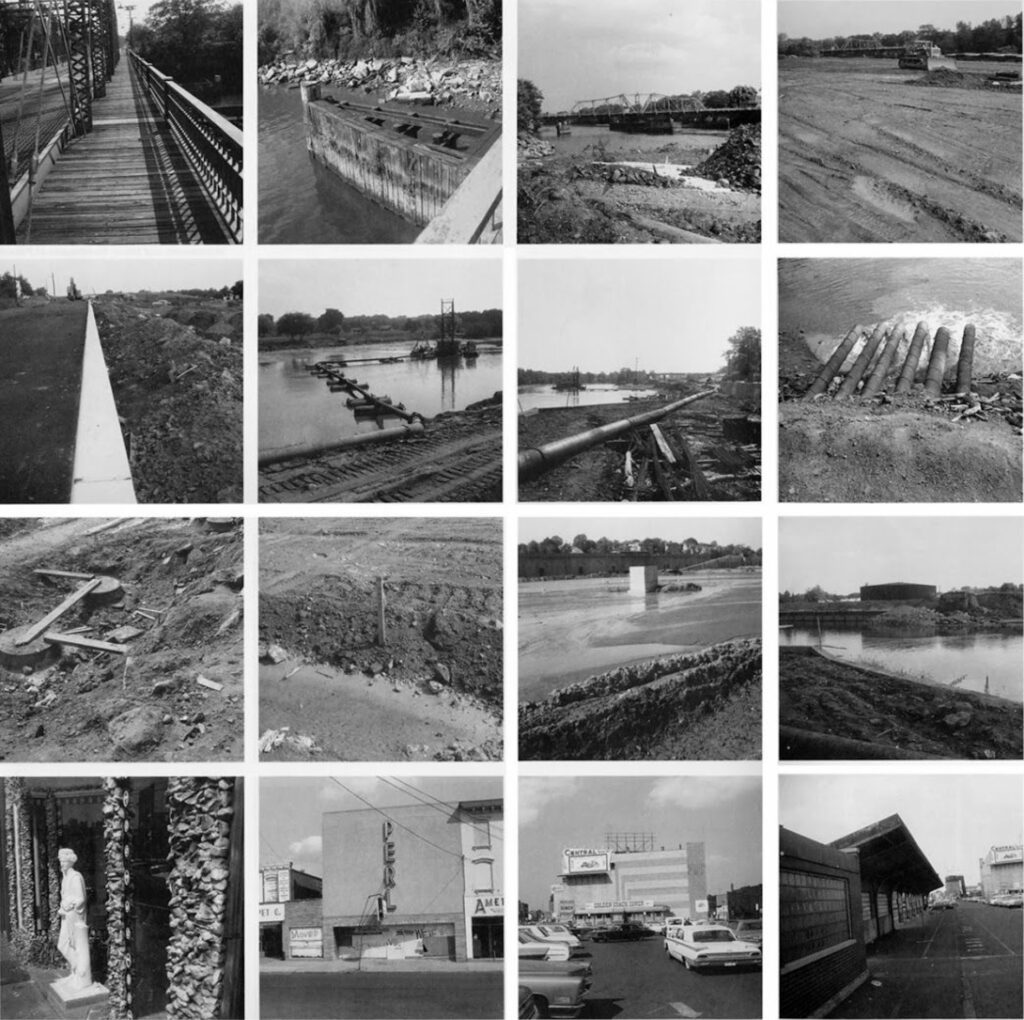IV ON PROTO-ARCHITECTURE
Dominika Kopiarova
A fundamental consequence of certain entropic processes lies in their irreversibility – the impossibility to violate the conservation of energy expressed in the iron laws of thermodynamics. Entropy change predicts the direction of spontaneous processes and determines whether they are irreversible or impossible – resulting in entropy being defined as a state of unidirectional disintegration – connected only with what comes after.
Robert Smithson expanded the entropic notion to the time that precedes – to the architecture’s ‘proto-state’. ‘Proto-architecture’ refers to the phase between the breaking ground at construction and the beginning of industrial activity – when the territory is in use. ‘The Monuments of Passaic’ are described as ‘ruins in reverse’ in reference to the structures that would eventually be built. Here, the ruins oppose any conception of romanticised ruins because ‘they don’t fall into ruins after they are built but rise into ruins before they are built.’[26]
From when to consider the site as ‘proto-ruins’ can be stretched to the very early planning phases. In ‘Towards the Development of an Air Terminal Site’ (1967), Smithson argues the importance of soil sampling and core borings: ‘The “boring” if seen as a discrete step in the development of the whole site has an aesthetic value. It is an invisible hole and could be defined by Carl Andre’s motto—“A thing is a hole in a thing it is not”.’[27] Hence, the future postindustrial – meaning the site planned for industrial activity – can equally be considered to possess those entropic qualities.
In Vladimir Nabokov’s statement – ‘The Future is but obsolete in reverse’,[28] – Robert Smithson saw a confirmation of entropic forces. When Smithson contemplated that ‘new monuments’ are ‘not built for ages but instead built against ages,’[29] he suggested that artists become involved in ‘systematic reduction of time down to fractions of seconds, in that both past and future are placed into an objective present.’[30] In ‘proto-ruins’, the projection of obsolescence materialises for landscapes of industrialisation. The notion that ruinous qualities can be seen in everything that is or will be constructed could also be projected onto conceptions of the future territories in obsolescence.
What is argued here is a paradigm shift from thinking in terms of industrial and postindustrial dichotomy as active versus obsolete landscape and instead to recognise the patterns of production of the landscapes that warp the time into itself. ‘All Passaic is obsolete; it is a present already past, already used up.’[31] As such, all future industrial territory is already postindustrial – it is obsolete.

